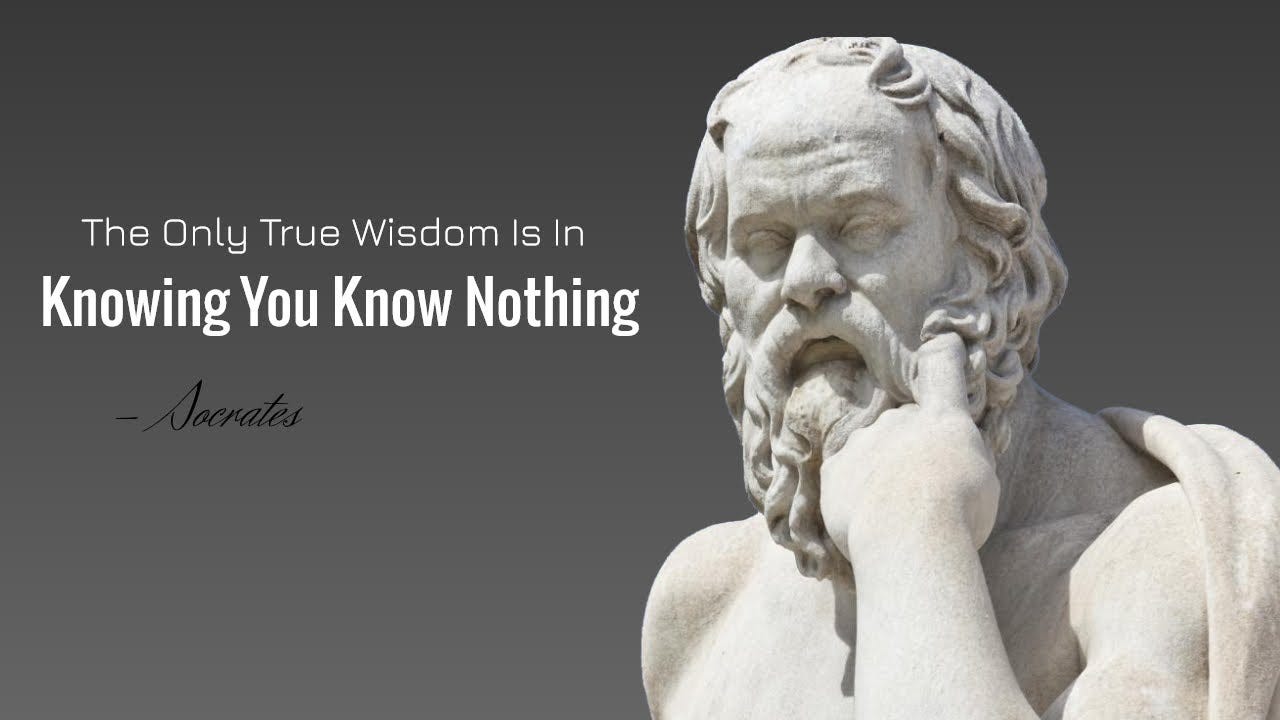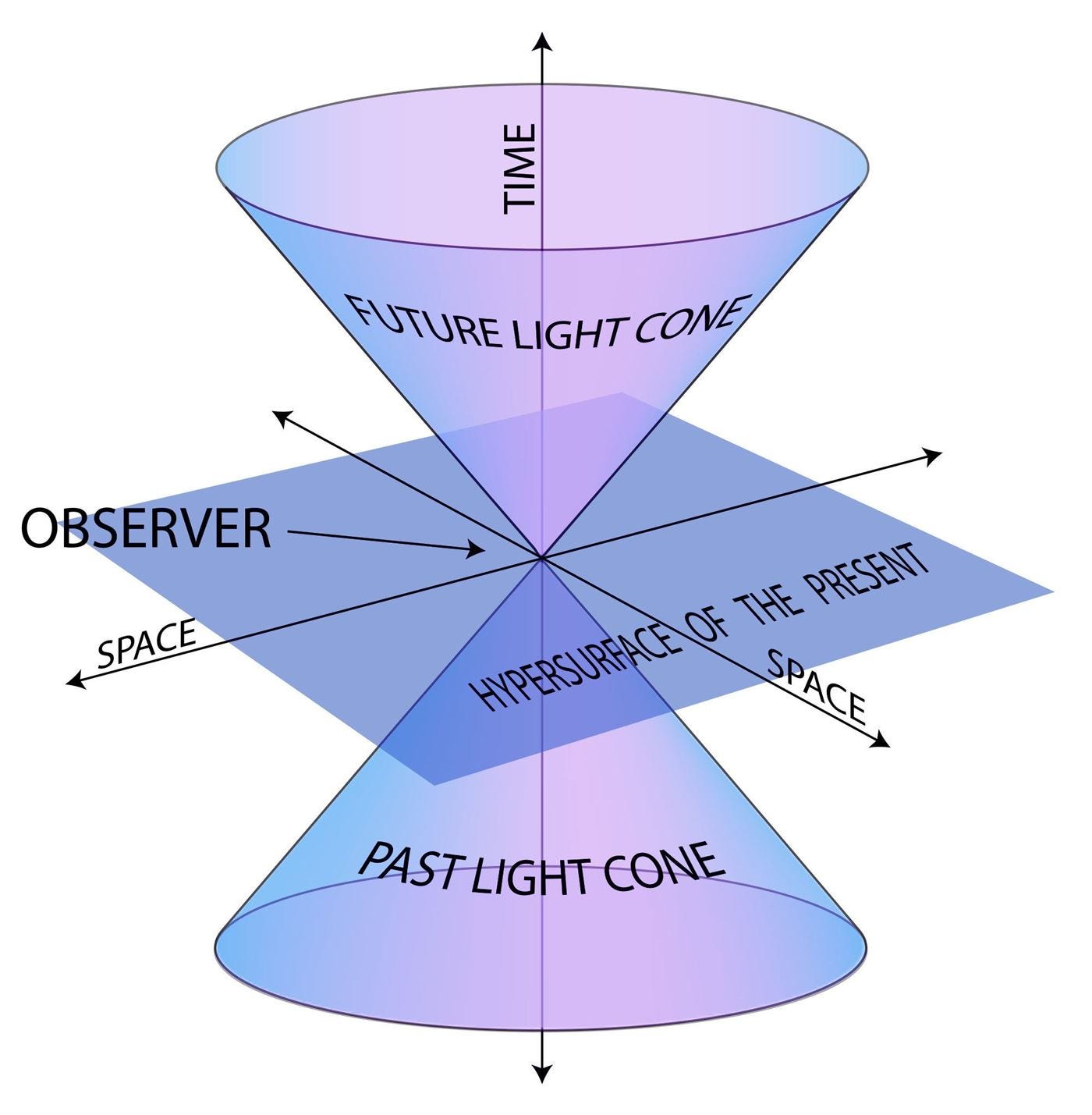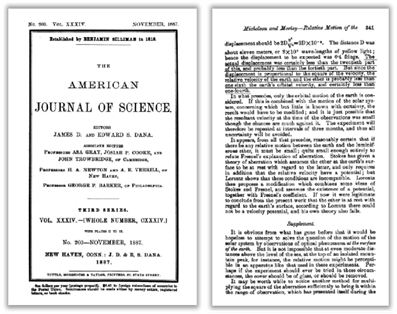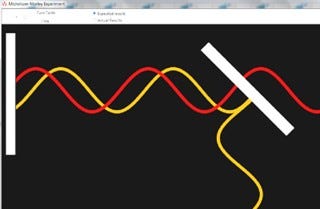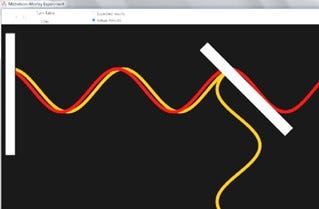Saturday, February 10, 2024
Heliocentricity and Scientism (part 2). Post-1905 experiments which found no movement of the Earth.
The magic world of the Special Theory of Relativity. Long dead but the public is just not ready for the burial. It would be too emotional for most people.
by StFerdIII
Scope of this post:
-
Keep the length down
-
Outline the post-1905 experiments which attempted to prove heliocentricity
-
The implications of their greater-than-null results
-
How ‘The Science’ reacted
-
Next posts: The ground shaking experiments of Georges Sagnac and D. C. Miller
Heresy and damnation
Edwin Hubble:
"…there must be no favored location in the universe, no center, no boundary; all must see the universe alike. And, in order to ensure this situation, the cosmologist postulates spatial isotropy and spatial homogeneity.…" (Edwin Hubble, The Observational Approach to Cosmology, 1937, p. 63)
A very religious declaration from an icon of ‘The Science’.
‘Do you believe in a flat earth’? will be the response if you ask someone, ‘can you provide for me, physical proof to support the Copernican principle or heliocentricity’? An exasperated interlocutor might also reply with, ‘are you stupid and one of those religious idiots? Of course it flies around the Sun, everyone knows this, Galileo say, Einstein say, BBC say, NASA say, and you are not smarter than Einstein chud’.
You can do your own poll. Ask anyone to give you the speed of the Earth’s journey around the Sun. Add the bonus question of ‘diurnal’ or daily rotational speed. I doubt 1 in 10 could answer both. The average person has no idea that the assumed speed of the mobile Earth is 30 km / second, 1800 km per minute, or a rather astounding 108.000 km/hour. That is pretty quick.
One would think that such a speed might be noticeable and measurable. Supposedly, pace ‘The Science’, it isn’t. You believe; therefore you spin around. For the record the diurnal motion is purportedly and roughly, 1600 km per hour. So here we are, spinning at 1600 km per hour in a tight turn, traversing the universe around the Sun at a sedate canter of 108.000 km per hour. If that is not a miracle of something or other, I don’t know what it is.
The previous post discussed the lack of evidence for heliocentricity pre-1905. This lack of evidence led directly to Einstein and Relativity. To save the Copernican theories and phenomena, the Special Theory of Relativity (STR) had to be invented. Few know this. Few know that there is no hard evidence for STR and that STR behind scientific closed doors has long been dead. Its public burial and the rubbishing of its great apostle Einstein, is just too emotional a consideration for the great unwashed mass.
The previous post which can be extended into a book, was intended only as an introduction to a topic that rolls people’s eyes. ‘You can’t be serious?’ will be the standard head-shaking comment. However as this post will summarise, it gets even more difficult for the Sun-worshippers, post 1905. There are literally dozens of experiments that you have never heard of, which do not support STR nor heliocentricity. The brave explorer can find none that support the theories, ChatGPT and textbooks using their illogical and tautological claims notwithstanding.
Socrates and evidence
Albert Einstein
“I have come to believe that the motion of the Earth cannot be detected by any optical experiment, though the Earth is revolving around the sun.” (Speech titled: “How I Created the Theory of Relativity,” delivered at Kyoto University, Japan, Dec. 14, 1922, as cited in Physics Today, August, 1982)
(The very religious declaration of a devout Copernican)
1905 is of course a watershed year in ‘The Science’, when Einstein published his theory of relativity, on September 26 entitled “On the Electrodynamics of Bodies in Motion” in the Annalen der Physik. As a mental concept Relativity has a long history, including Galilean, Descartian, Newtonian and Lorentzian relativity. Einstein’s theory built on these antecedents and took them to their logical end point. He postulated that physical, observational, and rational investigation could be replaced by models and maths.
In Einstein’s universe there is no absolute reality, and all objects are moving relative to each other. It is the imposition of Kant into science, via Ernst Mach who was probably the key inspiration for Einstein, which saturates the absurdity of the Special Theory of Relativity. Relativity as a theological principle and abstract idea, simply means that there is no single point of reference, anywhere, any place at any time.
Because there is no single point of reference or a ‘frame of inertia’ (a grid, a reference point, e.g. a stationary Earth) it means that we can use maths and models to contort the universe into any theory we find pleasing. Or, to paraphrase Einstein, if we look at the phenomena around us, we could as easily explain what we see in the universe by assuming that the Earth is immobile, or the Sun, or even the moon. Everything we see could be explained by any number of ‘relative’ models. This means that there is no fixed reality. By extension, the only way to make sense of it all is to describe this fluctuating relativisation with maths.
The fantasy world of STR
(A simple summary of the fantasy world of STR, a make believe world of maths, where you can move the ‘observer’ to any location to prove your theory)
Philosopher and scientist Bertrand Russell:
“Whether the Earth rotates once a day from west to east, as Copernicus taught, or the heavens revolve once a day from east to west, as his predecessors believed, the observable phenomena will be exactly the same. This shows a defect in Newtonian dynamics, since an empirical science ought not to contain a metaphysical assumption, which can never be proved or disproved by observation.” (Fred Hoyle, Nicolaus Copernicus: An Essay on his Life and Work, p. 82
Einstein’s fantasy world is based on an ‘observer’ in a ‘frame of reference’ (a location, or a grid). From an ‘observers’ position Einstein can create a make-believe world. Depending on where the ‘observer’ is sited, Einstein and his friends can declare that when an observer views a moving object or objects (eg a star, an electron, a train), that object’s length, width, velocity, motion, and even mass are all ‘relative’ and subject to endless change, or apparent transformation (contraction, recession). Einstein can move the ‘observer’ around, or in many cases, get rid of him altogether if that suits the purpose. Within a frame of reference, and based on where you place the observer, two clocks can be both slower and faster than each other - a logical impossibility (see Dingle’s complaint).
The above for Einstein et al means that light based measurements or ‘mechanical’ experiments, are therefore by definition invalid (e.g. the Michelson-Morley experiment which disproved the Earth’s movement). A measurement of time or velocity using light waves or particles (‘The Science’ does not know what makes up light), could be invalid relative to the moving object if you move your frame of reference and the ‘observer’. Mechanical measurements for example on a mobile Earth (their assumption) means that the law of inertia is violated and the experiment nullified. How convenient. In this fantasy world, objects, time, speeds and relationships are not absolute and nothing can be reliably measured.
Magic and miracles in the Science religion
Within STR objects can appear from nowhere (eg anti-matter or positrons) and disappear into nowhere (violating the First Law of Thermodynamics). Objects can change shape, form, utility and composition at any time for whatever random chance reason. All relationships between objects are relative, even with light. This means there is no absolute anything. If needs arise, I can conjure up Dark Matter to balance Newtonian equations and save the phenomena, or invoke Dark Energy to explain the supposed endless acceleration of the universe, whilst contradictorily disproving the existence of an ‘ether’ (what then is ‘dark matter’ or ‘dark energy’?). I don’t need to prove that any of this really exists, as long as they reveal themselves in my infinitely inscrutable equations as constants or variables, giving form to calculations that no one will understand.
As Einstein wrote, imitating the earlier relativity of Galileo and his ships, if I stand on a platform and see a train travelling at 50 mph rush past and crash into a mountain, it is ‘relatively’ true to state that an ‘observer’ travelling on the train could claim that the train station and Earth moved into the train and that the train was crashed into. It depends on the ‘observer’ and their ‘frame of reference’. In times past we put such people into mental asylums.
In essence STR means nothing. For Newton, a committed Copernican, ‘space’ not the Earth, was the absolute point of reference. For Einstein who needed to erase the ether, in order to invalidate the failed experiments of Fizeau and Michelson-Morley, not even space would be tolerated as an absolute frame of reference. In Einsteinian relativity there is no absolute frame of reference, no absolute motion, no absolute rest, no absolute medium, no absolute material, no absolute shape, no absolute time, no absolute space, and certainly, no absolute center of anything.
Space is for Einstein a vacuum, curved by gravity, a curvature that is unexplained and unproven. Yet the emptiness of space can be filled by Einstein when he wants his General Theory of Relativity maths to balance, and then suddenly an ‘imponderable ether’ (meaning something with no attributes) arrives and fills space with some ‘material’. Anything to get the magical and miraculous maths to balance.
Philosophy not science
As astrophysicist and critic of STR Fred Hoyle wrote,
Let it be understood at the outset that it makes no difference, from the point of view of describing planetary motion, whether we take the Earth or the Sun as the center of the solar system. Since the issue is one of relative motion only, there are infinitely many exactly equivalent descriptions referred to different centers – in principle any point will do, the Moon, Jupiter….So the passions loosed on the world by the publication of Copernicus’ book, De revolutionibus orbium caelestium libri VI, were logically irrelevant… (Fred Hoyle, Nicolaus Copernicus: An Essay on his Life and Work, p. 1)
Importantly for the Sun-Worshippers the relativising of reality means that the Earth cannot be the center of creation or the universe, because pace the underlying philosophy and Relativity’s complex ‘tensor calculus’ maths, no center exists. This is the major purpose of STR.
’The Science’ can now use this philosophical premise to concoct many pages of maths to merge time and space into a new dimension which contradicts quantum mechanics (if that suits its purpose), creating an entirely fictitious reality, or write more maths which ‘prove’ that the universe is ‘curved’, or maybe not, depending on the philosophical disposition or what is needed to be ‘proven’. The main point however, is that there is no need for physical, observational proof. As Einstein remarked, the models and theory will tell us what reality should be. In this make-believe world, maths and models, not experimental evidence are the arbiters of ‘truth’.
The entire philosophy and theology of Relativity gives ‘The Science’ free reign to employ complicated, arcane models no one understands, to create all varieties of imaginable theoretical constructs on how the universe, or the thousands of purported multiverses, operate. The underlying theme is that these maths ‘prove’ the Copernican principle that the Earth is not the center of anything and is just an unimportant sphere in a remote galaxy of no great importance.
This philosophy, dressed up in maths and maths only, is of course faithfully echoed with breathless admiration by the controlled media who demand veneration of these demi-gods of abstraction if not outright worship. ‘The Science’, starting in the 17th century, took a wrong turn and decided that models usurped common sense, objective proof and the world of the 5 senses.
Back to Michelson-Morley
(Sept 1887, Report on the Michelson-Morley failure, now turned upside down by ‘The Science’ as a signal victory for STR and heliocentricity….)
Charles Lane Poor: “The Michelson-Morley experiment forms the basis of the relativity theory: Einstein calls it decisive…if it should develop that there is a measurable ether-drift, then the entire fabric of the relativity theory would collapse like a house of cards.” (Poor, Gravitation versus Relativity, p. 261.)
A few posts have discussed the importance of the 1887 experiment by Michelson-Morley to prove the Earth’s mobility, using an advanced ‘interferometer’ machine, which is a highly sensitive and complex instrument, and very difficult to assemble (in fact Graham Bell provided the funds to build the technology used in 1887). The failure of the 1887 attempt to prove heliocentricity and mobility, which followed the failures of Fizeau, Airy and many others had a great impact on ‘The Science’ and Einstein. Pre-1905 more than a dozen experiments proved that the Earth was immobile, and that no one could detect the 30 km / second movement of the Earth in the ‘ether’.
Expected result from Michelson’s interferometer if the Earth was moving:
Actual Result:
Even worse for ‘The Science’, the results of 1887 and other attempts were not null or zero. They recorded on average, a mobility of around 3-8 km / second. This movement can only be explained in 3 ways:
1) The Earth is moving in the ether at ~5 km / second, not 30 km / sec; or,
2) The Earth is immobile and the universe’s ether is acting on the Earth with a centrifugal force of ~5 km / second; or,
3) The Earth is immobile and its diurnal (daily) rotation is ~5 km / second (unlikely and can be dismissed).
A fourth claim might be that the experiment or machinery was flawed, however the interferometer experimentation was done so many times, by so many different people with literally hundreds of thousands of collective readings that suggesting that all the experiments and all the equipment were flawed is insensible (R. Sungenis, Galileo was wrong, 2017, chapter 5).
One can imagine why ‘The Science’ was so terrified by these results, all measured by devout, earnest, religiously devoted Copernicans. They were not shirtless, toothless, illiterate, superstitious Catholics or Protesters, foaming at the mouth about geo-centricity. They were Copernicans.
What is interesting is that the 1887 experiment simply confirmed Michelson’s own 1881 experiment. In both cases, however, the results were not accepted at face value. Instead of admitting the 5-8 km / second mobility reading, in both experiments the result was put down as ‘null’, or no movement. But this is a lie. Why would ‘The Science’ lie? They would lie to give themselves ‘time and space’ to come up with a reason why the 30 km / second could and would not be detected, but a ~5 km / second was detected. Null meant that the scope for rationalising the failure could be made much broader.
This mendacity was well known in the 19th and early 20th centuries. In 1902, Physicist W. M. Hicks analysed the numerical data published in Michelson-Morley’s paper and proved that there was distinct evidence of an expected effect (i.e., ether drift). This data was also reflected in countless other results showing the same range of movement (W. M. Hicks, “On the Michelson-Morley Experiment Relating to the Drift of the Ether,” Philosophical Magazine, Series 6, vol. 3, 1902, p. 34). This evidence was of course ignored by ‘The Science’.
Smirk and carry on
Physicist G. J. Whitrow, a Copernican who like so many of his ilk admits that the results prove immobility, happily reports that such results can be ignored because after all, we the moderns, are much smarter than the medieval and early-moderns, and we just ‘know’ that the Earth is thundering around at 108.000 km per hour. He finds it all so amusing and obvious.
It is both amusing and instructive to speculate on what might have happened if such an experiment could have been performed in the sixteenth or seventeenth centuries when men were debating the rival merits of the Copernican and Ptolemaic systems. The result would surely have been interpreted as conclusive evidence for the immobility of the Earth, and therefore as a triumphant vindication of the Ptolemaic system and irrefutable falsification of the Copernican hypothesis. The moral of this historical fantasy is that it is often dangerous to believe in the absolute verification or falsification of a scientific hypothesis. All judgments of this type are necessarily made in some historical context which may be drastically modified by the changing perspective of human knowledge. (G. J. Whitrow, The Structure and Evolution of the Universe, 1949, 1959, p. 79)
